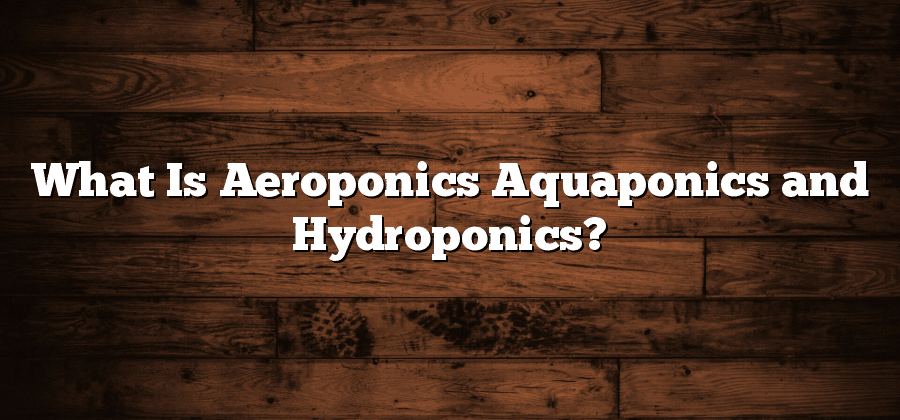The Evolution of Soilless Agriculture
Soilless agriculture, also known as hydroponics, has come a long way since its ancient origins. Dating back to the Hanging Gardens of Babylon and the floating gardens of the Aztecs, this innovative farming technique has gradually revolutionized the way we grow plants. Today, it has evolved to become a sophisticated system that maximizes plant productivity and reduces environmental impact.
Early soilless agriculture systems relied on simple methods of water cultivation, using materials such as clay, stone, and sand as the growing medium. Over time, advancements in technology and scientific understanding have led to the development of more complex hydroponic systems. These modern systems utilize nutrient-rich solutions, controlled environments, and precise monitoring to optimize plant growth. With the ability to grow crops year-round, regardless of climate or soil conditions, soilless agriculture has become a game-changer in sustainable food production.
Harnessing the Power of Air for Plant Growth
The concept of harnessing the power of air for plant growth may sound like a futuristic idea, but it is actually a practice that has been utilized for centuries. This method, known as aeroponics, involves growing plants in an air or mist environment without the use of soil or artificial mediums. Instead, plant roots are suspended in air, where they are constantly exposed to a fine mist of nutrient-rich solution. This allows for maximum contact between the roots and the nutrients, promoting faster growth and increased nutrient absorption.
One of the key advantages of aeroponics is its ability to provide plants with a constant supply of oxygen. By suspending the roots in the air, the plant is able to take in oxygen directly from the atmosphere, bypassing the need for oxygen to be transported through the soil. This increased oxygenation not only stimulates root growth and nutrient absorption, but also helps prevent the occurrence of anaerobic conditions that can lead to root rot or other diseases. Additionally, the misting system used in aeroponics ensures that the roots are constantly hydrated, allowing the plant to thrive even in conditions of water scarcity.
Exploring the Symbiotic Relationship Between Fish and Plants
Aquaponics is a unique and innovative system that explores the fascinating relationship between fish and plants. In this symbiotic approach, fish waste provides the essential nutrients for plant growth, while the plants, in turn, filter and purify the water for the fish. This mutually beneficial relationship not only eliminates the need for soil but also maximizes resource utilization and creates a self-sustaining ecosystem.
One of the key benefits of this symbiotic relationship is the efficient use of water. With traditional farming methods, water consumption is often extensive, leading to significant waste. However, in aquaponics, water is continuously recycled and reused. The fish waste contains essential nutrients such as nitrogen, which is converted into nitrates by bacteria and utilized by the plants. As the plants absorb the nutrients, they filter and clean the water before it is returned to the fish tank. This closed-loop system significantly reduces water wastage while ensuring optimal growth conditions for both fish and plants.
Through this symbiotic relationship between fish and plants, aquaponics offers a sustainable and environmentally-friendly solution for food production. By harnessing the power of this natural cycle, we can create systems that not only yield abundant harvests but also conserve water and energy. The potential of this innovative approach holds promise for the future of agriculture, opening up new possibilities for urban farming, food security, and resource management.
Maximizing Plant Growth with Water-Based Systems
Water-based systems have emerged as a revolutionary approach to maximizing plant growth. By eliminating the need for soil, these systems provide a controlled and efficient environment for plants to thrive. This method involves growing plants in nutrient-rich water, allowing their roots to directly absorb the necessary elements for growth.
One of the key advantages of water-based systems is their ability to optimize nutrient delivery to the plants. By carefully monitoring and adjusting the nutrient levels in the water, growers can ensure that plants receive exactly what they need at each stage of growth. This precise control over nutrient intake enables plants to reach their full potential, resulting in healthier and more robust crops. Additionally, water-based systems eliminate the risks associated with traditional soil cultivation, such as nutrient imbalances and soil-borne diseases. This not only leads to higher yields but also reduces the reliance on pesticides and other chemical interventions.
The Science Behind Nutrient Delivery in Aeroponics
A key factor in the success of aeroponic systems lies in the precise delivery of nutrients to plants. Unlike traditional methods of plant cultivation, where soil acts as a medium for nutrient absorption, aeroponics relies on a highly efficient system that delivers nutrients directly to the roots. This method allows for greater control over nutrient levels and ensures that plants receive the optimal amount of essential elements for growth and productivity.
In aeroponic systems, the delivery of nutrients is achieved through a mechanism known as misting. Nutrient-rich water is converted into a fine mist, which is then sprayed onto the plant roots suspended in the air. This misting process allows for rapid absorption of nutrients directly by the roots, bypassing the need for soil or other growing mediums. By eliminating the need for soil, aeroponics eliminates the risk of nutrient depletion and allows for precise control over the nutrient composition. This ensures that plants receive the exact balance of macronutrients, micronutrients, and other essential elements necessary for their optimal growth and development.






